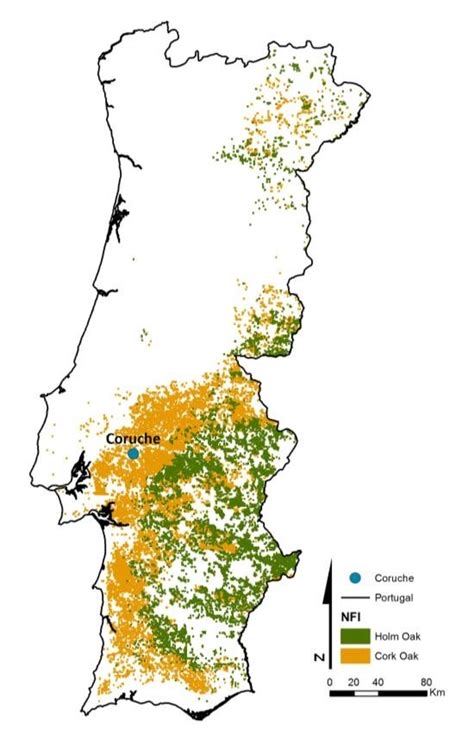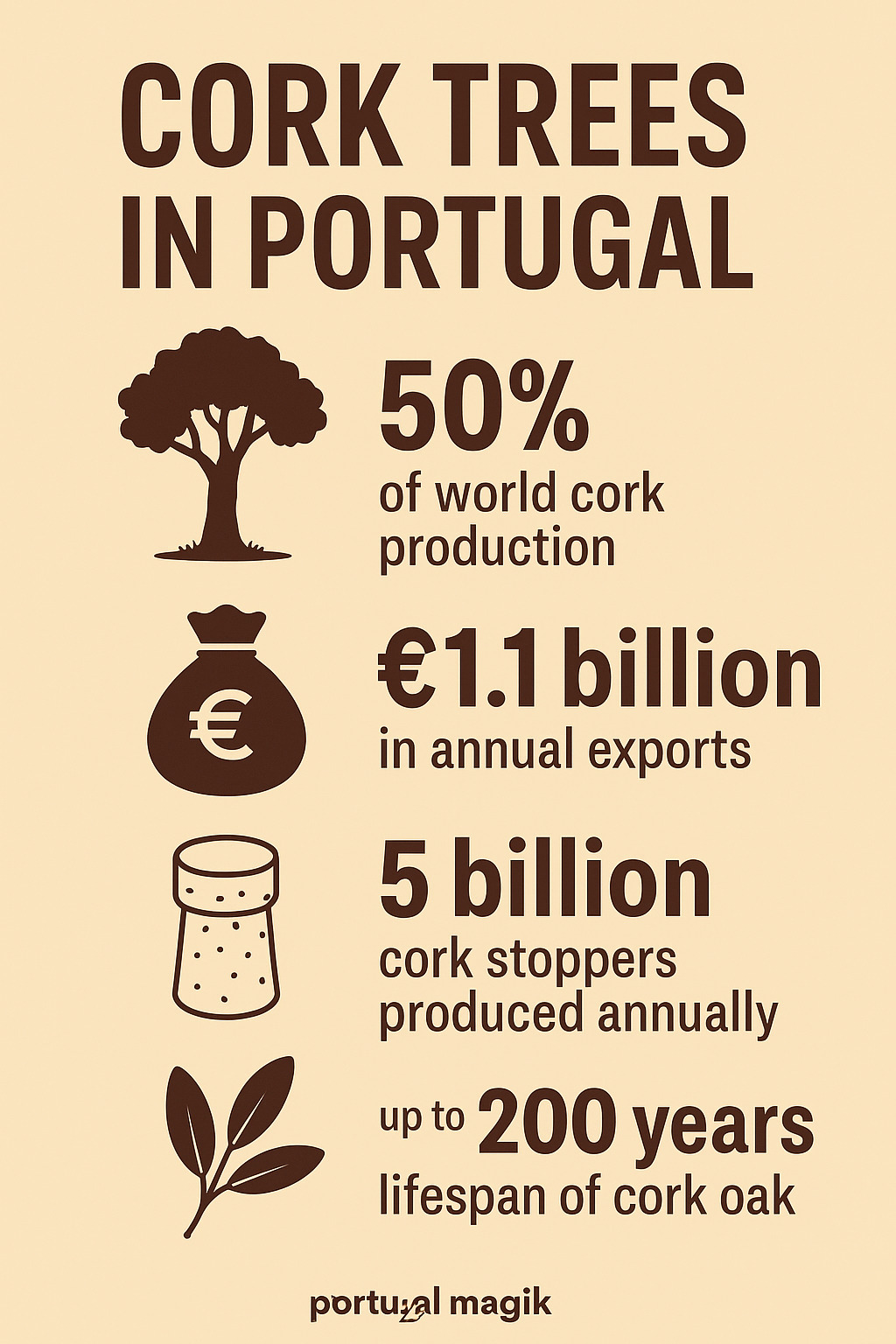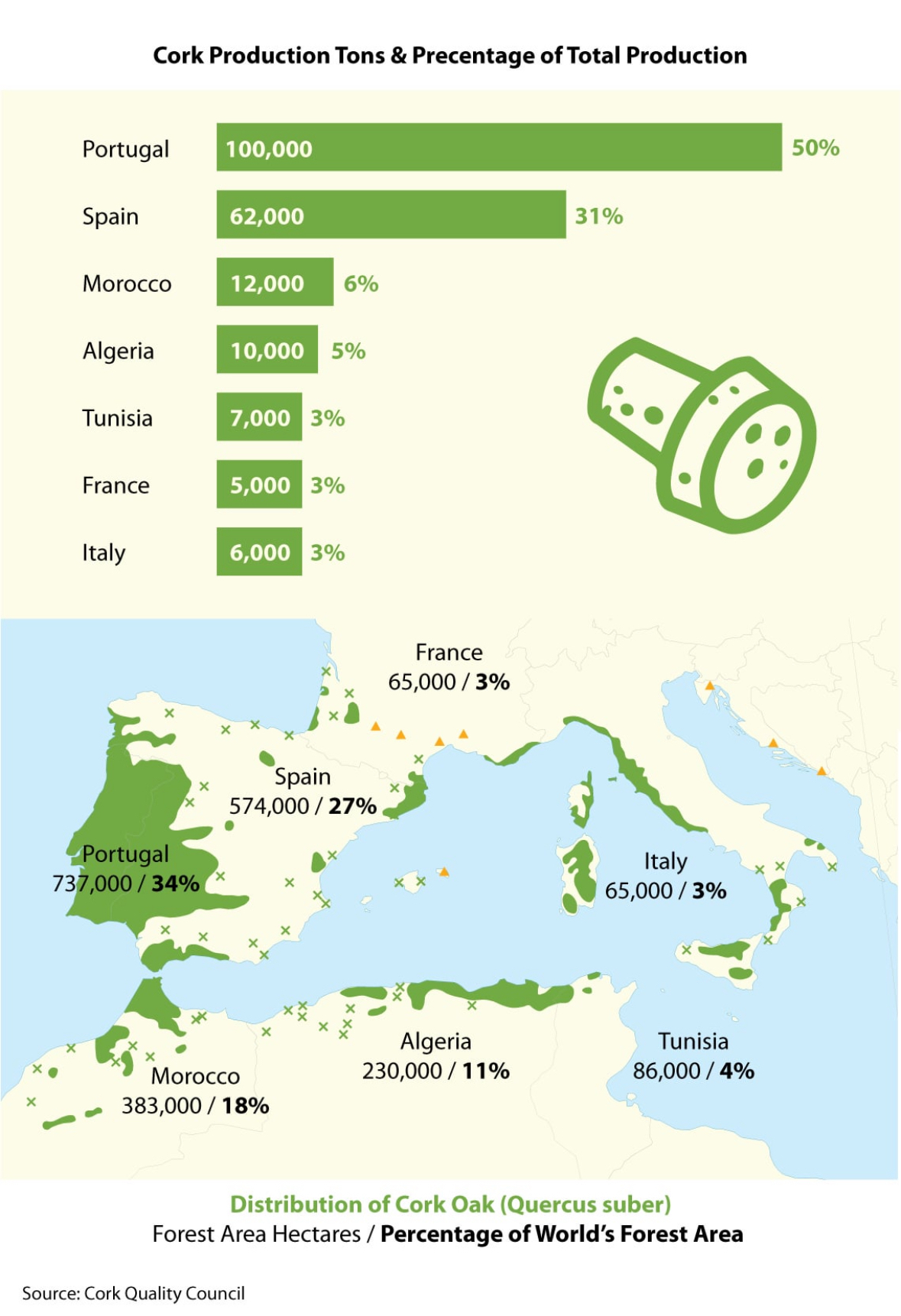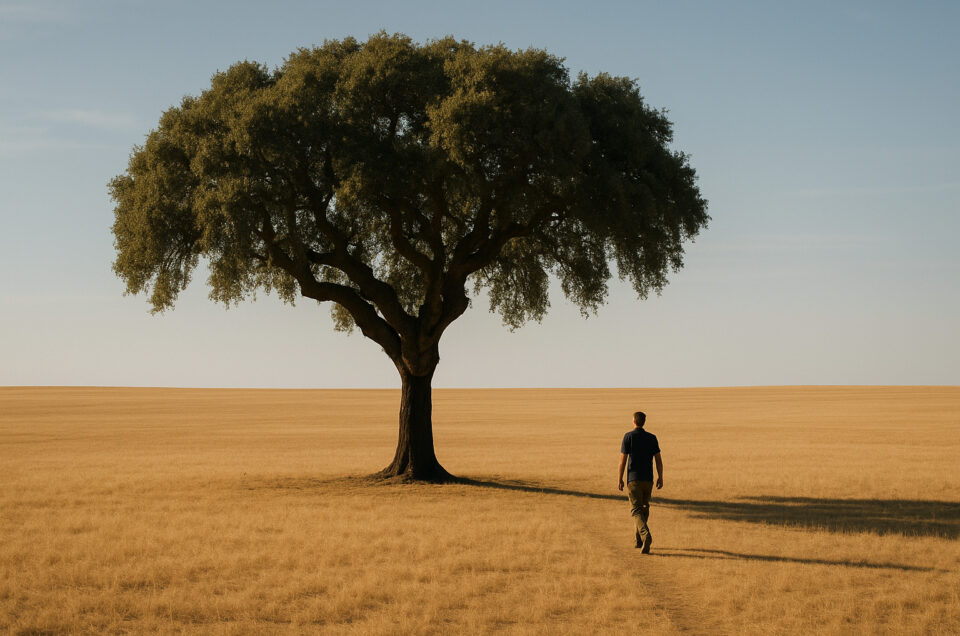Winding through Portugal’s sun-soaked Alentejo region, it doesn’t take long before you start noticing them. Wide, knotted trunks. Deep, green canopies. And bark that looks… peeled? These are cork oak trees — the quiet workhorses of the Portuguese landscape and a powerful symbol of the country’s harmony with nature.
To outsiders, cork might just be what pops off a wine bottle or lines a pinboard. But in Portugal, cork tells a deeper story. It’s a centuries-old livelihood. It’s a deeply sustainable industry. It’s even part of the national identity. And now, it’s being rediscovered by a new generation of artisans, architects, designers, and travelers who see it not just as a material — but a movement.
Welcome to the world of the cork tree, one of Portugal’s most magical natural legacies.
What Exactly Is a Cork Tree?
The cork tree — Quercus suber — is an evergreen oak native to the western Mediterranean. While it can be found in parts of Spain, France, Morocco, and Italy, it thrives most completely in Portugal, where the conditions are close to perfect: a mix of hot summers, mild winters, and sandy soils.
But the real magic lies in its bark.
Cork is harvested not by cutting down the tree, but by carefully peeling away the outer bark — a process that can be repeated every 9 to 12 years. The tree survives, heals, and keeps growing. In fact, a single cork tree can be harvested more than 15 times in its life, which often stretches over 200 years.
The first harvest doesn’t yield usable material. It takes about 25 years for a cork oak to be ready. But once it reaches that age, it becomes a long-term provider — a sustainable, slow-growing gift from nature.

Portugal’s Role: The World Leader in Cork
Portugal produces around 50% of the world’s cork, and it’s not a recent development. The industry has deep roots — from Roman times to the Age of Discoveries and into the modern wine era, cork has been part of the country’s economic story.
Today, cork remains a €1.1 billion industry, employing over 20,000 people and exporting to more than 130 countries. From wine stoppers and flooring to NASA-grade insulation and luxury handbags, the applications are vast and growing.
But wine corks are still king. Portugal alone produces over 5 billion cork stoppers a year. And contrary to rumors of plastic taking over the wine world, many premium winemakers are doubling down on natural cork — not just for tradition, but for the science of aging wine well.
How Cork Is Harvested — and Why It’s So Unique
Travel through rural Alentejo in summer and you might spot harvesters at work. These are not just lumberjacks — they’re skilled specialists known as tiradores. With precise strokes of a curved axe, they strip large sheets of bark from the trunk, being careful never to cut too deep.
This is slow, patient labor passed down through generations. Harvesting typically happens between May and August, when the bark separates more easily and the tree experiences the least stress.
Once removed, the cork is stacked and left to cure in open air for up to six months. From there, it’s boiled, flattened, and sorted by quality. The best cork becomes wine stoppers. The rest is ground and used for flooring, insulation, fashion, or mixed into innovative composites.
Here’s the key: the tree stays standing. There’s no deforestation here — only regeneration. The more cork you use, the more incentive there is to keep these trees alive and thriving.

The Montado: A Living Landscape
Cork trees rarely grow in dense forests. Instead, they’re found in montados — the traditional Portuguese cork oak woodlands, especially abundant in the Alentejo and Algarve regions.
A montado isn’t just a forest. It’s a complex, multi-use landscape that blends agriculture, grazing, forestry, and conservation. Farmers might raise sheep beneath the trees, harvest acorns for pigs, or plant crops between tree clusters. This balance has evolved over centuries.
Montados are home to over 160 bird species, reptiles, amphibians, mushrooms, insects, and rare mammals like the endangered Iberian lynx. These ecosystems are so valuable that they’re classified as High Nature Value Farming Systems by the EU.
And they’re not just good for biodiversity — they’re powerful carbon sinks, helping to regulate water cycles, store carbon, and prevent desertification. Especially in a warming climate, montados are more than beautiful — they’re critical to Portugal’s environmental resilience.
The Cork Tree and the Portuguese Soul
Cork isn’t just a product. In Portugal, it’s a symbol of continuity, patience, and ecological respect. In 2011, the cork oak became the national tree — a rare official tribute to a species. The law protects these trees from being cut down without a permit, and even on private land, harvesting is regulated to ensure long-term sustainability.
In short: cork trees are treated with reverence.
You’ll find them celebrated in art, design, and craft markets across the country. Lisbon boutiques sell cork wallets and watches. In Porto, restaurants use cork as tabletops and coasters. In the Algarve, cork bark hangs in eco-hotels as sculpture. This is not marketing fluff — it’s a cultural embrace.
There’s even a slow-travel movement tied to cork. Tour operators now offer cork-themed walks, tree-planting days, and visits to family-run cork farms where visitors can see the harvesting process up close. It’s nature tourism with a meaningful story.

Cork as a Material: Stylish, Sustainable, Surprising
Let’s talk about the material itself. Cork is:
-
Lightweight
-
Water-resistant
-
Fire-retardant
-
Flexible and compressible
-
Hypoallergenic
-
Naturally insulating
-
Biodegradable and recyclable
No wonder it’s showing up everywhere — from Louboutin stiletto heels and Stella McCartney bags, to eco-friendly yoga mats, surfboards, and even spacecraft shielding.
Luxury watchmakers are experimenting with cork straps. Tesla’s designers have explored cork-lined dashboards. Even high-end hotels are lining walls with cork panels for their warmth and acoustic properties.
There’s a shift happening. As the world turns away from plastic, cork is stepping into the spotlight as the natural, renewable material of the future — and Portugal is leading the charge.
The Threats: Not All Is Rosy
But cork’s future isn’t guaranteed.
The biggest challenge? Climate change. Portugal is experiencing hotter, drier summers, longer droughts, and more wildfires. While cork oaks are adapted to Mediterranean dryness, even they have limits. Young trees especially struggle to take root in parched soil.
Then there’s the economic challenge. Cork is a slow crop. It takes decades to mature, and the labor is expensive compared to synthetic alternatives. Global competition, urbanization, and changing land values are pushing some landowners toward faster-return crops or development.
In some regions, cork trees are aging out — with no new plantings to replace them. The traditional montado system is under stress from monoculture farming and rural depopulation. Without a new generation of cork farmers, knowledge could be lost.
What’s Being Done
Thankfully, cork has defenders — and innovators.
-
Government protections remain strong. Cork oak trees are legally protected, and landowners can receive subsidies for maintaining or planting them.
-
Non-profits and co-ops are working with small farmers to support sustainable harvesting and promote eco-tourism.
-
Tech and research centers are improving how cork is processed and graded, introducing sensors, AI, and blockchain traceability to the supply chain.
-
Design schools and architecture firms are embracing cork as the next wave of sustainable building.
Cork isn’t staying still. It’s evolving — from wine cellars to catwalks, eco-homes to carbon markets.
Where to Experience Cork in Portugal
Want to get closer to this world? Here are a few ways to experience cork firsthand:
1. Alentejo Cork Trails
Join a guided hike through cork woodlands near Évora or Estremoz. Learn about the trees, spot birds, and meet local farmers.
2. Visit a Cork Factory
In towns like São Brás de Alportel or Santa Maria da Feira, you can visit cork processing plants and see how the raw bark becomes wine stoppers, flooring, and fashion.
3. Shop Local Cork Goods
From Belcork in Lisbon to local artisans in Sintra or Loulé, you’ll find bags, shoes, jewelry, notebooks, and more — all made from Portuguese cork.
4. Stay in a Cork Hotel
Book a stay at the Ecork Hotel in Évora — the world’s first hotel with cork-insulated walls — and enjoy eco-luxury in the heart of cork country.
5. Plant a Cork Tree
Some eco-tourism companies offer hands-on conservation experiences. Planting a cork oak is symbolic, yes — but also powerful. It’s an investment in a tree that could live for 200 years.
🌍 Global Cork Production: Share by Country
-
Portugal: ~50–60% of global output
-
Spain: ~25–30%
-
Morocco: ~5–6%
-
Algeria: ~5%
-
Tunisia, Italy, France: each ~1–3%
These figures confirm Portugal’s position as the world’s dominant cork producer
Final Thoughts: A Material with Meaning
Cork isn’t flashy. It doesn’t shout. But it endures. It breathes. It adapts.
In a world of fast fashion, short cycles, and synthetic everything, cork offers something quieter: longevity, responsibility, and deep roots. It reflects the rhythm of the Portuguese countryside — slow, steady, sustainable.
To understand cork is to understand something essential about Portugal itself. This small country at the edge of Europe is punching above its weight — not just with cutting-edge tech or modern design, but with ancient trees, lovingly tended, and ready for the future.
So next time you pop open a bottle of wine, run your hand along a cork notebook, or walk through the Alentejo and hear the leaves crackling in the heat — remember: you’re not just touching bark.
You’re touching history. And maybe, a bit of tomorrow too.




